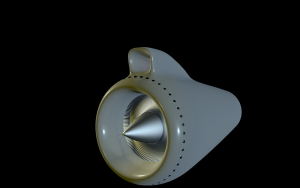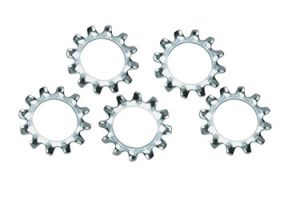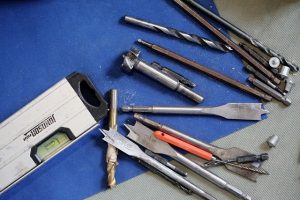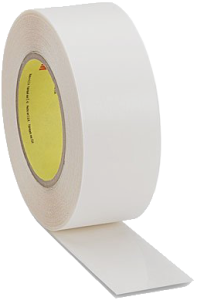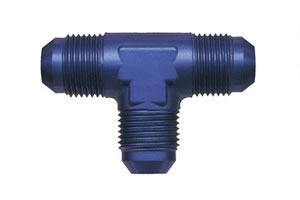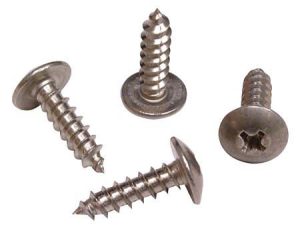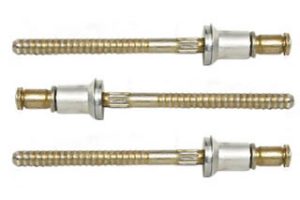
Rivets play an important role in the aerospace industry. From the Airbus A380 to the Cessna 172, they are found in nearly all airplanes. Rivets are fasteners that, like nuts and bolts, are used to join parts. While nuts and bolts are temporary fasteners, however, rivets are permanent fasteners. Below are seven common myths about rivets debunked.
#1) All Rivets Are the Same
Not all rivets are the same. There are many different types of rivets. While they are all classified as permanent fasteners, each type has its own characteristics. Solid rivets, for instance, feature a smooth shank and a mushroom head, whereas blind rivets are designed for use in applications where you can only access one side of the parts. Other common types of rivets include semi-tubular, structural steel and drive rivets.
#2) Difficult to Use
You might be surprised to learn just how easy it is to use rivets. While the exact method varies depending on the type, most rivets require an initial pilot hole. You can place a rivet through this hole, followed by using a tool to deform the rivet. Some rivets require nothing more than a hammer to deform, whereas others require a rivet gun or compression tool. Regardless, all you need is the right tool.
#3) Only Used in the Aerospace Industry
While rivets are commonly used in the aerospace industry, they are used in other industries as well. The construction industry, for example, uses a lot of rivets. Unlike bolts, they won’t loosen over time. This makes rivets a popular choice for commercial buildings, bridges and even railroads.
#4) Most Rivets Are Made of Copper
Some rivets are, in fact, made of copper, but copper isn’t a common material in which these specialized fasteners are made. Copper rivets are typically only used with parts made of copper alloys or nonmetallic materials, which limits their applications. Instead, most rivets are made of aluminum or mild steel. Aluminum and mild steel are softer, so rivets made of these materials can deform more easily during installation.
#5) Rivets Are Weak
This myth couldn’t be further from the truth. They have soft sections — the sections that are intended to be deformed during installation — but rivets are incredibly strong. They can withstand intense weight and stress. And because they are permanent fasteners, they won’t loosen over time.
#6) Can’t Be Heat Treated
Rivets can absolutely be heat treated. Also known as annealing, heat treating is designed to strengthen rivets during production. Rivets are placed in a furnace, salt bath or oil bath. After heating to a temperature of up to 950 degrees Fahrenheit, the rivets are quenched in cold water.
#7) Can’t Be Removed
They may be classified as permanent fasteners, but you can still remove rivets. The process for removal typically involves drilling out the rivet. If a rivet is damaged, for example, you may be able to drill it out and replace it with a new rivet.
- SEO Powered Content & PR Distribution. Get Amplified Today.
- PlatoData.Network Vertical Generative Ai. Empower Yourself. Access Here.
- PlatoAiStream. Web3 Intelligence. Knowledge Amplified. Access Here.
- PlatoESG. Carbon, CleanTech, Energy, Environment, Solar, Waste Management. Access Here.
- PlatoHealth. Biotech and Clinical Trials Intelligence. Access Here.
- Source: https://monroeaerospace.com/blog/7-myths-about-rivets-debunked/
- :has
- :is
- :where
- $UP
- 200
- 300
- 7
- a
- A380
- Able
- About
- absolutely
- access
- Aerospace
- After
- Airbus
- Airplanes
- All
- also
- an
- and
- applications
- ARE
- AS
- BE
- because
- below
- blind
- bridges
- buildings
- but
- by
- CAN
- characteristics
- choice
- classified
- cold
- commercial
- Common
- commonly
- construction
- Copper
- Depending
- designed
- different
- difficult
- drive
- during
- each
- easily
- easy
- Even
- exact
- example
- fact
- Feature
- followed
- For
- found
- from
- further
- hammer
- Have
- head
- High
- Hole
- How
- However
- HTTPS
- if
- important
- in
- In other
- include
- incredibly
- industries
- industry
- initial
- installation
- instance
- instead
- intended
- intense
- involves
- IT
- ITS
- join
- jpg
- just
- known
- LEARN
- like
- limits
- Lot
- made
- MAKES
- many
- material
- materials
- max-width
- May..
- method
- might
- mild
- more
- most
- nearly
- Need
- New
- nothing
- of
- Oil
- on
- ONE
- only
- or
- Other
- Others
- out
- over
- own
- parts
- permanent
- pilot
- Place
- placed
- plato
- Plato Data Intelligence
- PlatoData
- Play
- Popular
- process
- Production
- Regardless
- removal
- remove
- replace
- require
- right
- Role
- salt
- same
- sections
- seven
- side
- smooth
- So
- Soft
- solid
- some
- specialized
- steel
- Still
- Strengthen
- stress
- strong
- structural
- surprised
- temporary
- than
- that
- The
- their
- There.
- These
- they
- this
- Through
- time
- to
- tool
- treated
- treating
- truth
- type
- types
- typically
- unlike
- use
- used
- uses
- using
- Water
- weight
- WELL
- whereas
- which
- while
- with
- you
- zephyrnet



